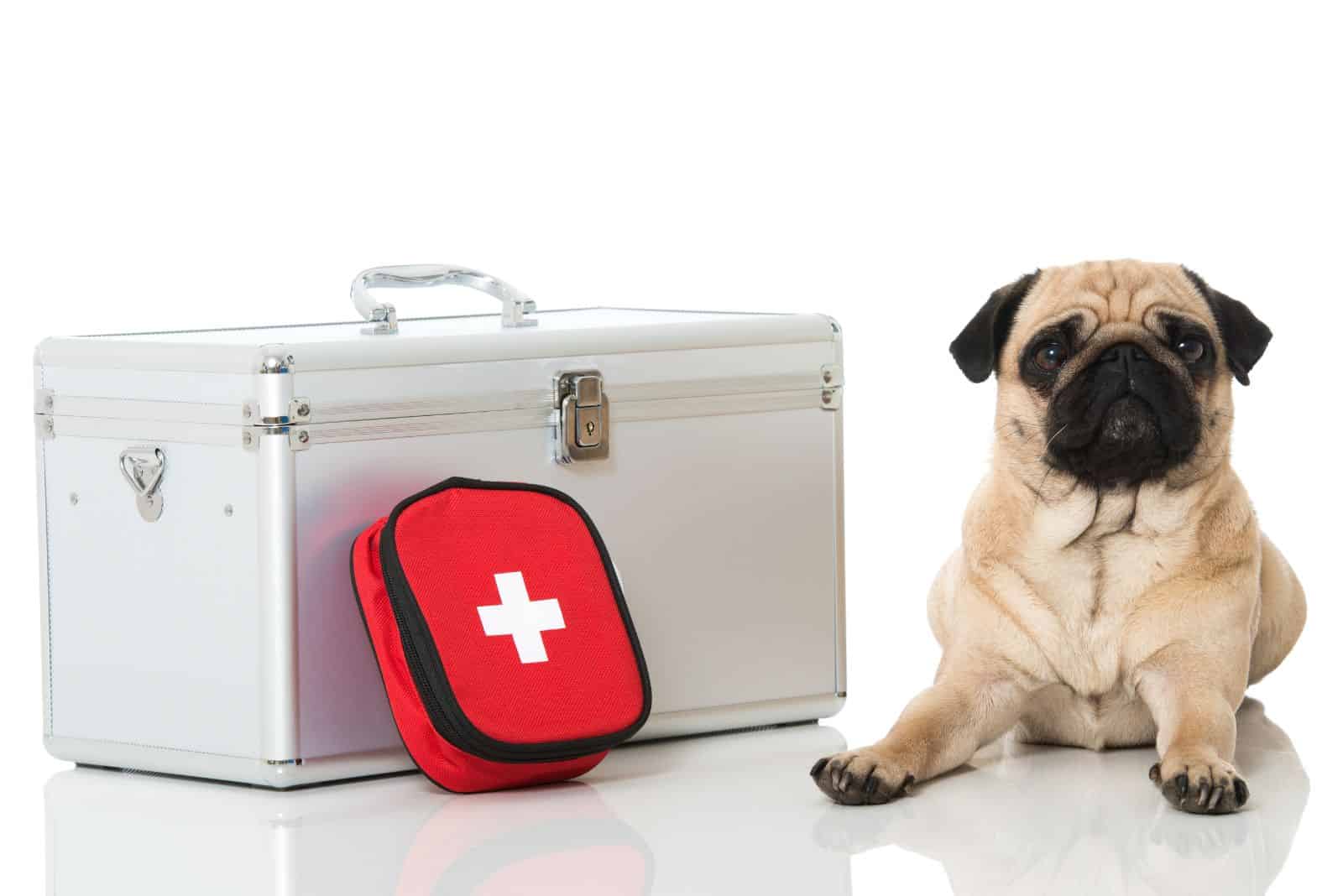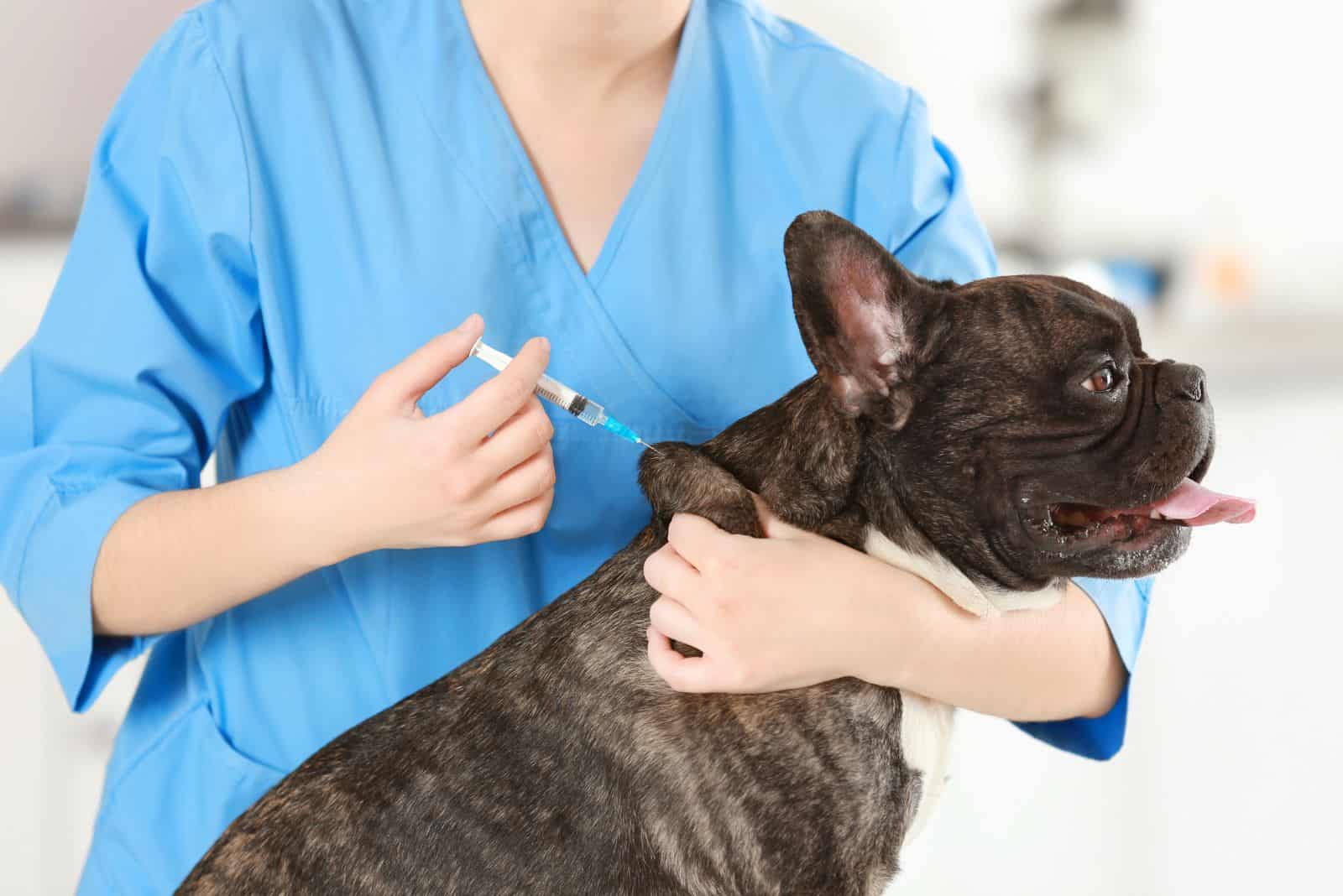Thinking about breeding dogs and seeing only the good that will come out of it is a big mistake. Yes, having a bunch of cute puppies is a heart-melting situation, but it takes more than just watching them and enjoying their little cute faces.
There are serious questions you have to ask yourself, and 7 things you must do before breeding your dog. It’s not a video game… it is real life, and you have to get ready for real-life issues.
From your dog’s health, timing, and money, you have to take a lot of things into consideration before actually breeding your dog.
It’s not something you can just take back.
It is a huge responsibility, and if you are not ready, it is better not to do it.
Take a look at these 7 things and see if you’ve got what it takes to be a responsible dog breeder.
Things You Must Do Before Breeding Your Dog
In essence, a responsible breeder won’t make a difference if he’s breeding a purebred or a mixed dog. The responsibility is the same. However, if you plan on selling purebred puppies, then the responsibility gets bigger.
The responsibility is bigger because people won’t accept dogs that don’t look like what they gave their money for. If you are breeding French Bulldogs, then a newborn French Bulldog has to have the conformation and traits of a purebred Frenchie.
But, no matter if you want to sell puppies or not, you have to go through these 7 things before you go through with breeding your dog.
1. Preparation

The first thing you have to do is prepare yourself for what’s coming. You are not planting new trees – you want your dogs to have puppies. Preparation doesn’t only include reading about the process, but preparing emergency kits and whelping kits right away.
A dog’s pregnancy lasts much shorter than a human’s so you have to get a whelping kit prepared right away. Their usual gestation period lasts from 60 to 70 days, but it can be shorter in some cases.
To sum it up – during the preparation period, you have to:
- Prepare an emergency kit (like a first-aid kit)
- Prepare whelping kit
- Learn about your dog’s breed (if it’s purebred)
One thing many dog breeders of purebred dogs have is called “kennel blindness”. This means you think your dog is the best representative of the breed, and there is no need to question it. But, take a look at American Kennel Club breed pages, or watch dog shows to see if your dog is actually according to the breed standards.
This is not because your dog is not good enough, but because people who will buy puppies from you want to have purebred dogs according to the breed standards — from size to coat color and shape of their body.
2. Breeding Pair Health
You are not only looking at the health status of your dog, but the health status of the dog you are pairing it with.
Of course, if you own both a male and a female, then it’s up to you to get them health tested. Tests differ from breed to breed because some dog breeds have a predisposition for certain genetic diseases. For example, a Cavalier King Charles Spaniel is prone to EF (Episodic Falling), but you don’t have to test your Siberian Husky for it.
The usual tests that should be done before breeding any dog breed are:
- Hip tests (scoring)
- Elbow tests
- Hearing tests
- Eye tests
- Thyroid gland tests
- Heart tests
- DNA tests
- Brucellosis testing
Apart from that, both of your dogs need to be cleared of any internal or external parasites such as fleas, mites, hookworms, etc.
Now, apart from these tests, there are additional tests depending on the dog breed you have.
If your dog, male or female, has any problems, no matter if it’s an eye issue or a heart issue, it shouldn’t be bred.
3. Vaccinations

Before you breed your dog, you have to be certain they have had all of the necessary vaccinations. This is important not only for the health of the breeding dogs, but for their future offspring as well.
A female dog will pass her antibodies through colostrum (the first milk puppies drink after birth) to her puppies. This is how newborn puppies get their first immune cells to fight off diseases.
However, just like she can pass antibodies, she can also pass viruses and bacteria through her milk (and blood during the gestation period) if she has not been vaccinated or if she is not healthy.
So, before you breed your dogs, you have to make sure they received all of their vaccinations. You can always ask for proof of vaccination and health tests from a breeder who has the dog you want to breed yours with.
Read Next: Explaining Dog Behavior Changes After Vaccination
4. Behavior
Just like it is important to have a breeding pair of dogs that are in excellent health, they also have to show signs they have excellent behavioral traits.
Every dog is different. They can share similar behavioral traits with other dogs of their breed, but they will show their own temperament. For example, some Border Collie dogs will love water and others won’t.
Some Dalmatians might be slow-paced and low-energy dogs, even though they say a Dalmatian is a very active dog breed.
So, you have to check the behavior of the dogs you are putting into a breeding program. Think about traits you’d like your new dogs to have.
5. Is It Safe For A Female Dog?
This is a very important question you have to ask yourself before you decide to breed your dogs. Apart from checking if your female dog is healthy and has good behavioral traits, you have to think if it is safe for her to have puppies at the moment.
Is she too young or too old? Depending on the breed, some female dogs become sexually mature at around 5 to 6 months of age, and some others, when they turn one year.
Sometimes, premature sexual maturity can occur, which means that the growth process is not finished.
This can lead to a lot of problems for a female dog.
Also, if a female dog had a lot of litters throughout the year, having another one can be too hard on her body. It can even be life-threatening.
While there is no law in the States or in Canada about the number of litters a female dog can have in one year, there is a moral obligation to keep our pets safe. Most responsible breeders only have 2 per year or a maximum of 3.
This gives enough time for the female dog to recover from the previous pregnancy and whelping, as well as taking care of the puppies.
Read Next: Can A Dog Get Pregnant When Not In Heat?
6. What About The Puppies?

Breeding two dogs is the easiest part. What comes after that is where we get all the troubles. And, one of them is the question: what will you do with the puppies?
If you plan on selling them, what if you don’t sell them all? Are you capable of taking care of a few more dogs? I hope you won’t just drop them off at the local shelter.
No matter how popular the breed of your dog is, there could be hundreds of reasons why you won’t be able to sell all the puppies. One litter can have more than 10 puppies. That is a lot of dogs to feed and take care of.
Think hard about this question before you decide to breed your dog.
7. Money And Time
This one goes hand in hand with the question we just talked about. We are not talking about giving your male dog as a stud, but about having a female dog at home after breeding.
Do you have the time to care for the pregnant dog? Do you have the time to take care of the puppies after their birth?
And, do you have enough resources to cover all the expenses that can come up during and after the birthing process?
Here are some things that could happen that will be more expensive:
- Necessary C-section
- Traveling to another clinic for proper care
- A puppy born with special health needs
- A large litter of puppies
If you think it won’t happen to you, that is the wrong mindset. You should be prepared for everything because you are not responsible for just one, but many lives at the same time.
The Conclusion
If you have a purebred dog, thinking about breeding him or her (or them) can be very tempting. We think about all the dog breeders who make a lot of money breeding their dogs. But, no one will tell you about the bad side of it all.
Yes, they will show you how much money they had to spend so that they can justify the high prices, but that’s not all. A responsible breeder has all of these 7 things prepared before breeding their dogs.
They know what to do if something bad happens, if they don’t sell all the puppies, or if their breeding dog has some health issue.
Do you know what you would do? Are you going to be a new responsible dog breeder?
I hope you will think about these 7 things thoroughly, and be honest with yourself if you are actually ready to become a dog breeder.
Read Next: What To Expect From A Female Dog After Mating
